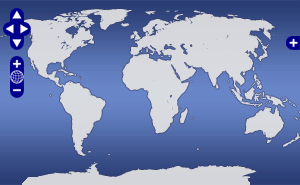Southwest Indian Ridge (SWIR 9-16E) residual mantle Bouguer gravity anomaly data (netCDF format)
Shipboard free-air gravity data were processed in the same way as described by Wang et al. (2015) to obtain Residual Mantle Bouguer Anomaly (RMBA): The gravitational effects of seafloor topography and relief on the crust-mantle interface were subtracted from the free-air gravity anomaly to obtain mantle Bouguer anomaly (MBA), assuming a reference crustal thickness of 6 km and using the spectrum method of Parker (1973). Densities of water, crust, and mantle were assumed to be 1.03 10^3, 2.7 10^3, and 3.3 10^3 kg m^-3, respectively. RMBA was then calculated by removing the gravitational effect of lithospheric cooling from MBA, based on a 3-D mantle thermal model. The mantle thermal structure was calculated for a 100 km thick layer, using the 2-D age grid of Wang et al. (2015) and assuming simple 1-D plate cooling (Turcotte and Schubert, 2002; Wang et al., 2011). The parameters used in the calculation are the same as in Wang et al. (2011). This mantle thermal model was then converted to a 3-D mantle density structure, which was used to calculate gravitational effects. The data file is in GMT-compatible netCDF grid format.
Lin, Jian
Investigator
SUSTC
Dick, Henry
Investigator
WHOI
Quality
2
The data have been processed/modified to a level beyond that of basic quality control (e.g. final processed sonar data, photo-mosaics).
License
Data Files
References
Data Citation Information
ISO/XML Metadata
Expand

 Map View
Map View
